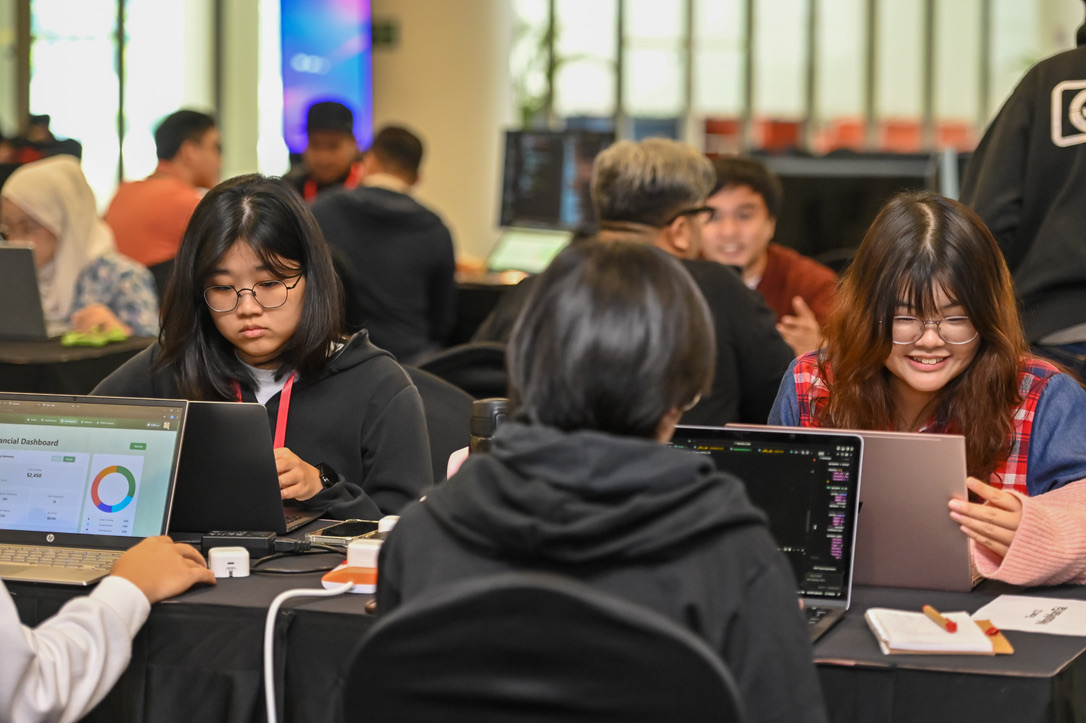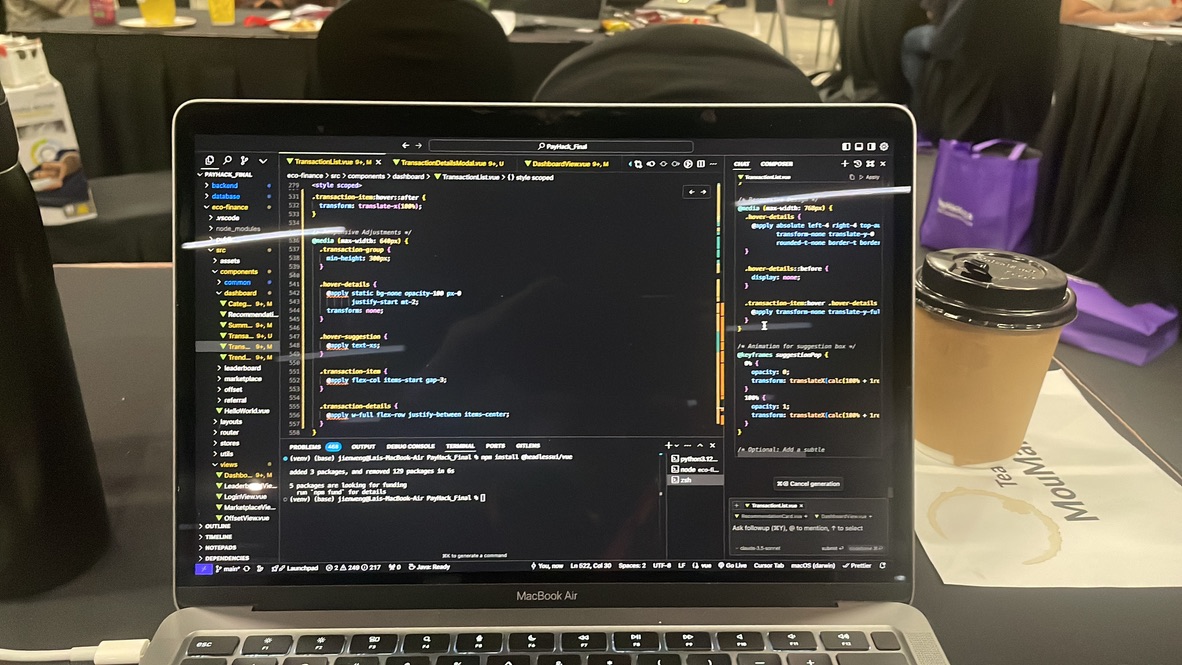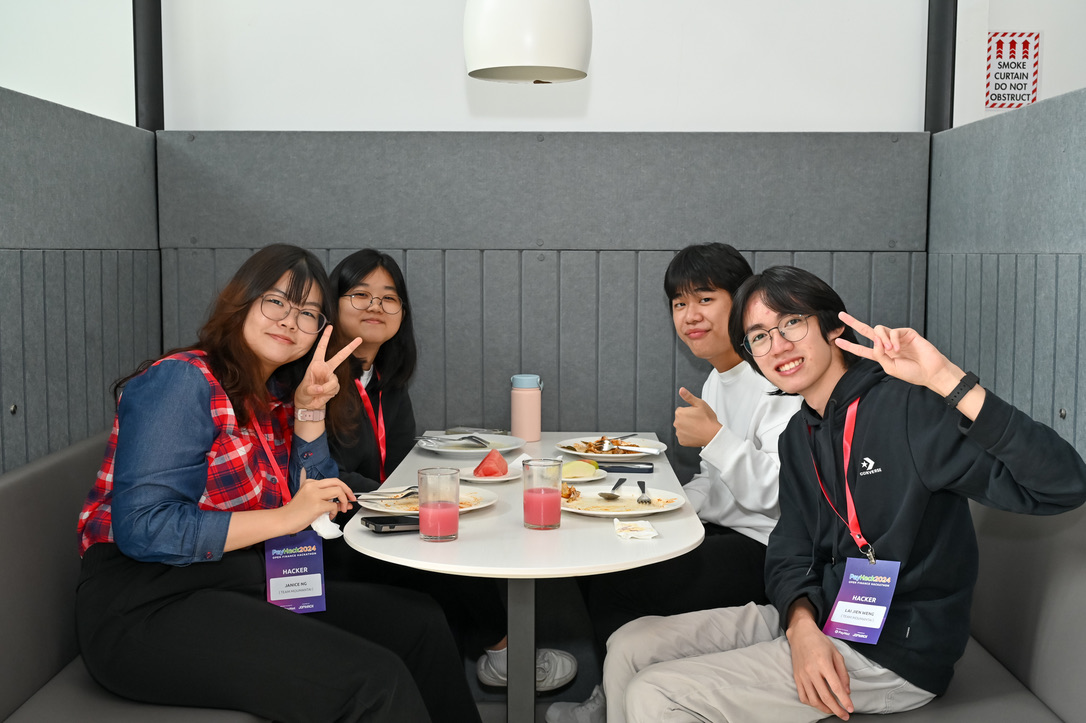First Physical Hackathon Experience
It was a typical evening when I first saw the announcement for PayHack 2024. "PayNet X JomHack Hackathon", the banner read, accompanied by logos of PayNet and JomHack. Most people would have scrolled past—after all, hackathons are usually the domain of computer science whizzes and engineering pros. But something made me pause. Maybe it was the challenge, or perhaps it was the nagging feeling that we mathematicians had something unique to offer to the tech world.
I found myself staring at my phone, thumb hovering over the share button. "Am I really qualified for this?" I thought to myself. "What if we make fools of ourselves?" The doubts crept in like unwanted guests. But then another voice, stronger and more determined, pushed back: "When else will we get a chance like this? We might not be coders, but we know how to solve problems. Isn't that what hackathons are really about?"
I reached out to my fellow mathematics coursemates: Janice, Roius, and Gwyn. "Hey, want to do something crazy?" I asked, half expecting them to laugh it off. To my surprise, their responses came quickly, filled with enthusiasm despite (or maybe because of) our collective inexperience. Only 2 of us had ever participated in a hackathon before, and Gwyn had never even written a line of code. But there we were, four mathematics students from UTAR, signing up for one of the most competitive hackathons in the country.
The looks we got when we arrived were priceless. "Are you guys from Computer Science?" someone asked, eyeing our team with curiosity. We exchanged glances and grinned. "Nope, we're Math students, haha..." The mixture of surprise and skepticism on their faces was something I'll never forget. In those moments, our outsider status felt both terrifying and weirdly empowering.

Our first breakfast together at PayHack 2024 - nervous but excited! The calm before the storm.
November 30th marked our first day, and it was a blur of ideation and learning. We came up with an innovative idea: creating an app to visualize transaction carbon footprints, with the ability to pool and trade carbon footprint surpluses with companies in need. On paper, it sounded promising—a perfect blend of fintech and environmental consciousness.

Getting grilled during our mentoring session - each question pushed us to think deeper about our solution
Then came the intense mentoring sessions with Johan Nasir. He didn't hold back. "What happens if the carbon credits are manipulated?" he'd challenge. "How do you ensure the authenticity of the footprint data?" Another round of rethinking. Each session felt like an intense rotan session—tough love at its finest. He'd poke holes in our solutions, push us to think deeper, and force us to confront real-world problems that actually needed solving.
The week before the hackathon was a rollercoaster. Competing against almost 100 teams from across Malaysia, we were shocked to make it to the Top 32. When we saw Johan's name among our judges and received the news of our advancement, our excitement was through the roof. But reality quickly set in—we had a major problem. None of us had real web development experience. My knowledge was limited to Python, SQL, and vanilla HTML/CSS/JavaScript.
With just four days between Tuesday and Friday, we had to make crucial technical decisions while juggling our internships. After intense research, we settled on Vue.js and Flask. Janice even traveled all the way from JB to KL for this. Every evening after our internships, we'd dive into tutorials, trying to absorb as much as we could about our chosen tech stack.

3 AM and still debugging - running on determination and coffee
The hackathon itself was intense. When exhaustion hit, we took turns napping wherever we could. I couldn't get a tent, so I made do with a random bench for quick 4-hour power naps before jumping back into coding. Everything seemed to be going smoothly until the morning of the submission. At 8:30 AM, just after breakfast and 90 minutes before the deadline, our backend crashed—the information couldn't be parsed properly. In a desperate move, we had to hardcode some components just to make the submission deadline at 10 AM.

Presenting our final product: MouManTai - tracking and trading carbon footprints from financial transactions
While we didn't make it to the Top 10, watching the final pitches was an eye-opening experience. The winning teams showcased solutions that were not just technically impressive but also deeply thoughtful about real-world implementation. One team's blockchain-based remittance system particularly stood out - their attention to regulatory compliance and market research was incredible. "We should have done more market validation," I thought to myself. "Next time, we need to focus not just on the technical solution but on the whole business case."
The top teams also demonstrated masterful presentation skills. Their pitches weren't just about features - they told compelling stories about why their solutions mattered. Each slide was carefully crafted, each demo was flawlessly executed, and their responses to judges' questions showed deep understanding of both technical and business aspects. I made mental notes: "Practice the pitch more. Know your numbers. Be ready for any question."
Despite not making the finals, I did win a Samsung monitor in the lucky draw, a small consolation that brought some laughs to our tired team.

A silver lining - winning a Samsung monitor in the lucky draw!
Looking back now, the sleepless nights and endless debugging sessions blur together, but certain moments stand crystal clear: the late-night breakthrough when our first feature finally worked, the proud smile on Johan's face during our final presentation, and most importantly, the unshakeable bond formed between four mathematicians who dared to dream tech.

Our team photo by photographer
To Janice, Roius, and Gwyn: thank you for taking this leap of faith with me. For believing that our mathematical minds could contribute something meaningful to the tech world. To Johan: your guidance went beyond mentorship—you showed us that innovation comes from daring to be different. And to PayNet and JomHack: thank you for creating a space where even mathematics students could discover their potential in technology.
They say the best stories come from stepping out of your comfort zone. Well, we didn't just step—we took a giant leap. And while our first hackathon journey has ended, something tells me this is just the beginning of our adventure in the tech world. The equations and formulas we've studied for years are no longer just abstract concepts—they're tools waiting to be applied in the vast playground of technology.
After all, who says mathematicians can't be hackers too? Sometimes the best innovations come from those who dare to cross the boundaries between disciplines, who bring fresh perspectives to old problems. And maybe, just maybe, that's exactly what the tech world needs more of.